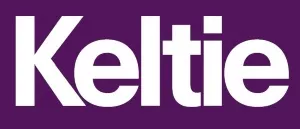The EUIPO recently published new guidance on the classification of trade mark applications for non-fungible tokens (NFTs). This guidance is helpful as we are seeing many filings in this area; however, further clarification may be needed.
The EUIPO guidance is available here. In summary, it states that:
- Virtual goods are proper to class 9 because they are treated as digital content or images, but the term virtual goods on its own lacks clarity and precision, so the content to which the virtual goods relate must be specified.
- The 12th edition of the Nice Classification will incorporate the term "downloadable digital files authenticated by non-fungible tokens" in class 9. The term NFT on its own is not acceptable and the type of digital item authenticated by the NFT must be specified.
Comments on the guidance can be submitted up to 3 October 2022, so there may be further developments after that. However, this approach provides welcome clarity for applicants and is also in line with practice we have seen in other offices, such as the Swiss IPI. The UK IPO has not published guidance on this question yet, but hopefully they will take a similar approach.
On the cryptofinance side (Class 36), the practice currently developing with European IPOs and WIPO is to accept terms such as 'financial services relating to virtual (or digital) currencies', rather than 'cryptocurrency services' or terms including the prefix 'crypto-', which we found has attracted some specification objections.
An important jurisdiction that might prove challenging in this area is China: with its strict approach to classification, unless new categories are admitted into the local 'sub-classes' practice, it may be difficult to achieve adequate protection for NFTs and cryptofinance services.
At Keltie, we are seeing more and more interest in filing trade mark applications relating to NFTs and cryptofinance, particularly among clients in the art, sport and fashion sectors.
In the United States, over 4,800 trade mark applications for NFTs and related goods/services were filed in the first six months of this year, according to US trade mark attorney Mike Kondoudis, who tracks NFT applications. He has also identified over 3,100 US applications for digital or cryptocurrencies (and related services) and over 3,300 for Metaverse and related virtual goods/services.
With such large volumes of applications, the risk of crowding is high, particularly given the popularity and scope of Class 9. That will make clearance searching in Class 9 increasingly difficult, and lead to conflicts that may in fact be conflicts only on paper, but that would still prevent us from clearing proposed new marks.
According to The Fashion Law blog, US examiners have recently objected to an intent-to-use application for MODAVERSE on the basis of a likelihood of confusion with an existing registration for MODAVERS and an application for Meta Gala due to its similarity to Met Gala. In Europe, where IP offices do not examine applications on relative grounds, third parties will need to be vigilant for similar applications.
In our opinion, there are two main challenges for IP offices that arise from the boom in NFT applications.
First, in the short term, examiners need to educate themselves about terminology relating to NFTs and cryptofinance, so that they can identify terms that are descriptive or lacking distinctiveness. The evolving nature of this sector means that there are new terms of art emerging and examiners need to be familiar with these. We have noted acceptance of some marks in this area that are very close to the line in terms of descriptiveness. Rigorous examination based on knowledge of the relevant new vocabulary of the NFT and cryptofinance sector will help ensure that protection is not granted to terms that should be free for others to use.
Second, and looking further ahead, the rise of NFTs will increase pressure on WIPO to review the Nice Classification and consider dividing Class 9. This class already covers a broad range of goods and if virtual goods are also registered here, as set out in the EUIPO guidance, then the overcrowding in this Class will increase – with all the problems that brings for searching and clearance.
The content of this article is intended to provide a general guide to the subject matter. Specialist advice should be sought about your specific circumstances.
We operate a free-to-view policy, asking only that you register in order to read all of our content. Please login or register to view the rest of this article.


